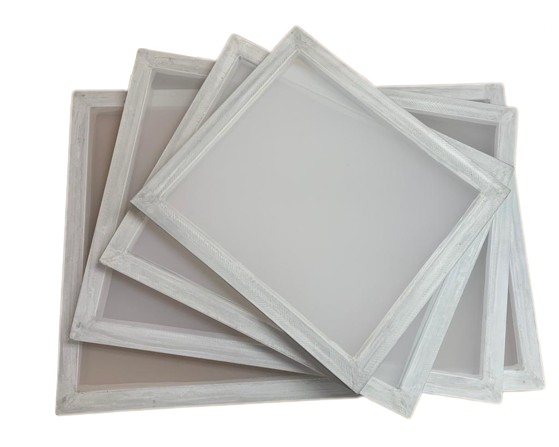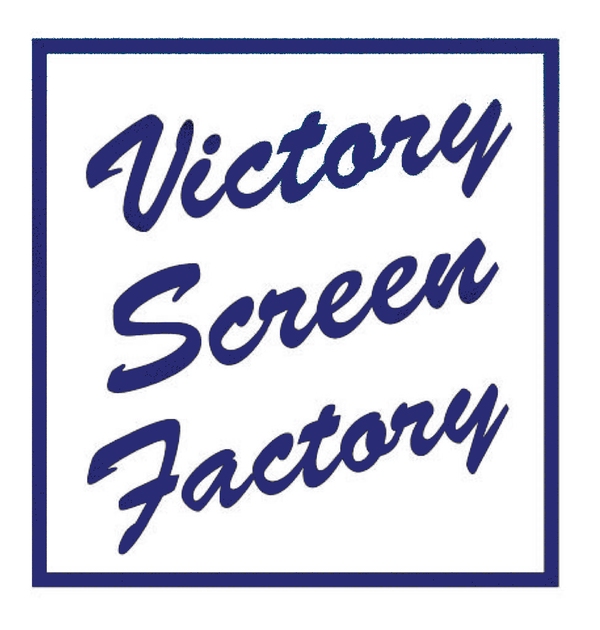
How to Choose the Right Screen Printing Screens for Your Project
Share
If you are planning a screen printing project, choosing the right screen printing screens is crucial. The type of screen you use can affect the quality of your prints, the amount of ink you use, and the level of detail you can achieve. In this article, we will guide you through the process of choosing the right screen printing screens for your project.
What is Screen Printing?
Screen printing is a printing technique that involves using a mesh screen to transfer ink onto a substrate, such as a t-shirt, paper, or plastic. The screen is coated with a light-sensitive emulsion, which is then exposed to light through a stencil, creating a pattern or design on the screen. The exposed areas of the screen allow the ink to pass through and onto the substrate, while the unexposed areas of the screen block the ink.
Size of Screen Printing Screens
Screen Printing Screens come in all sizes. Over the time printers used many different screens. From small like 8"x10" to extra large like 48"x72" or even larger.Most Common Screens
- 20"x24" These screens are used for printing t-shirts, bags and hoodies. They are typically used with manual press.
- 23"x31" You can use these screens for items such as banners, posters, and signs. They are often used with automatic press.
- 25"x36" These are used for larger items. Many students use these for printing artwork.
- 18"x20" Cost effective screen for smaller items.
Small Screens
Printing on hats and small items requires use of small screens. These can be 8"x11", 10"x14" or 12"x16". Many industrial companies use these screens for their applications.Large Screens

Starting from 30"x40" these screens are used for large prints, signs and posters. Some artists use them to create their artwork.
Mesh Count for Screen Printing Screens
Choosing a right mesh count is extremely important. Lower mesh count allows more ink to pass through on your substrate. The finer lines are in your image the higher mesh you will need. You can read more here Using Different Mesh Counts in Screen Printing: A Comprehensive GuideFactors to Consider When Choosing Screen Printing Screens
When choosing screen printing screens for your project, there are several factors to consider.Type of Ink
The type of ink you plan to use will affect the type of screen you need. Some inks require a higher mesh count to achieve a crisp, clean print, while others work better with a lower mesh count.Detail Level
The level of detail you want to achieve in your print will also affect the type of screen you need. If you want to print a design with fine lines or small text, you will need a higher mesh count screen.Substrate
The type of substrate you plan to print on will also affect the type of screen you need. Thicker substrates, such as sweatshirts or tote bags, require a lower mesh count screen to ensure the ink penetrates the fabric.Quantity
The quantity of prints you plan to make will also affect the type of screen you need. If you plan to make a large quantity of prints, you will need a screen that can withstand repeated use.Tips for Using Screen Printing Screens
Once you have chosen the right screen printing screens for your project, there are several tips to keep in mind to ensure a successful print.Proper Tension
Make sure the screen is properly tensioned before printing. A loose screen can cause ink to bleed or result in a blurry print.Cleanliness
Keep your screens clean and free of debris. Any dirt or ink buildup on the screen can affect the quality of your prints.Proper Ink Coverage
Make sure to apply the right amount of ink to your screen. Too little ink can result in a weak print, while too much ink can cause the print to blur.Conclusion
Choosing the right screen printing screens for your project is essential to achieve high-quality prints with the desired level of detail. Factors such as the type of ink, level of detail, substrate, and quantity of prints are crucial when making your choice. Once you have selected the right screen, proper tension, cleanliness, and ink coverage are important factors to keep in mind to ensure a successful print. By following the steps outlined in this article, you can choose the right screen printing screens for your project and create high-quality prints that meet your expectations. Remember to consider all the factors and follow the tips for best results.FAQs
- Can I reuse screen printing screens for different projects?
- Yes, screen printing screens can be reused for different projects as long as they are properly cleaned and stored.
- Is it necessary to use a stencil screen for small projects?
- No, stencil screens are not necessary for small projects. They are a convenient option but may not be cost-effective for one-time printing projects.
- Can I use any type of ink with any mesh count screen?
- No, the type of ink you use should be compatible with the mesh count of the screen. Consult with your ink supplier for recommendations.
- What is the ideal tension for a screen printing screen?
- The ideal tension for a screen printing screen is typically between 20-30 Newtons.
- Can I make my own screen printing screens?
- Yes, it is possible to make your own screens using a screen printing kit or by purchasing screen mesh and a frame separately. However, it may require some trial and error to achieve the desired tension and quality.
